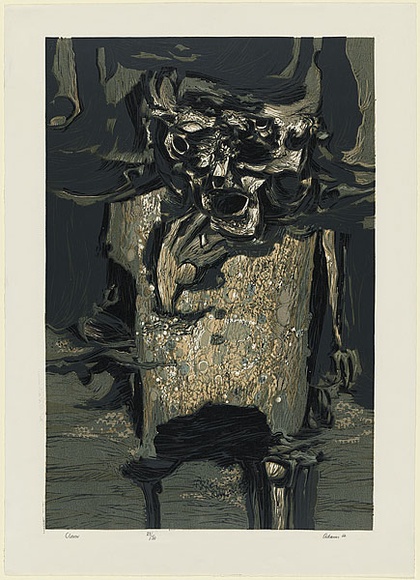
“Clown” symbolizes what appears to be a rather beat-up representation of a man.
The body is merely a stump, reminiscent of a lopped tree trunk.
The Clown’s visible leg is thin and frail-looking, somewhat small in comparison to the body.
A Patchwork of Masks
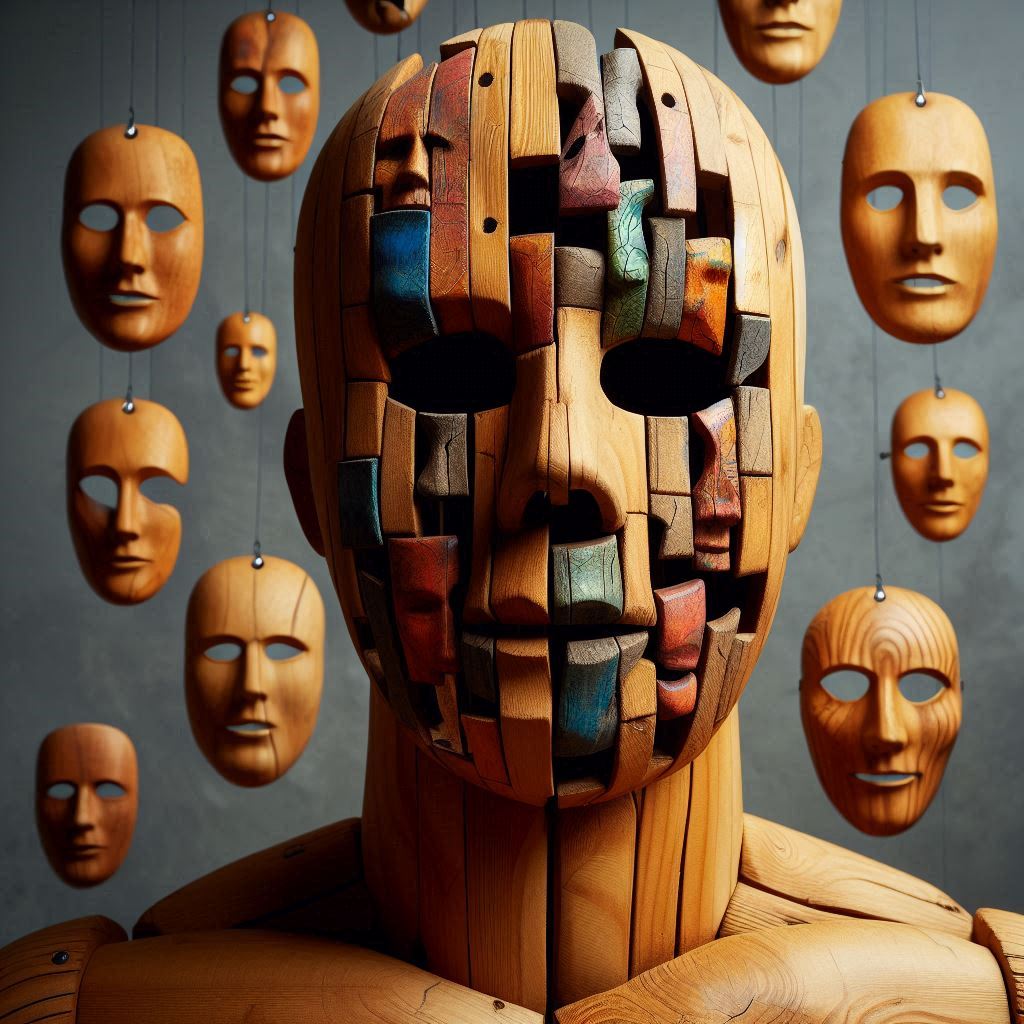
The face is a variation of masks, haphazardly fused together—fragmented and distorted.
The most clear feature? The mouth.
The Scream of the Hollow Man
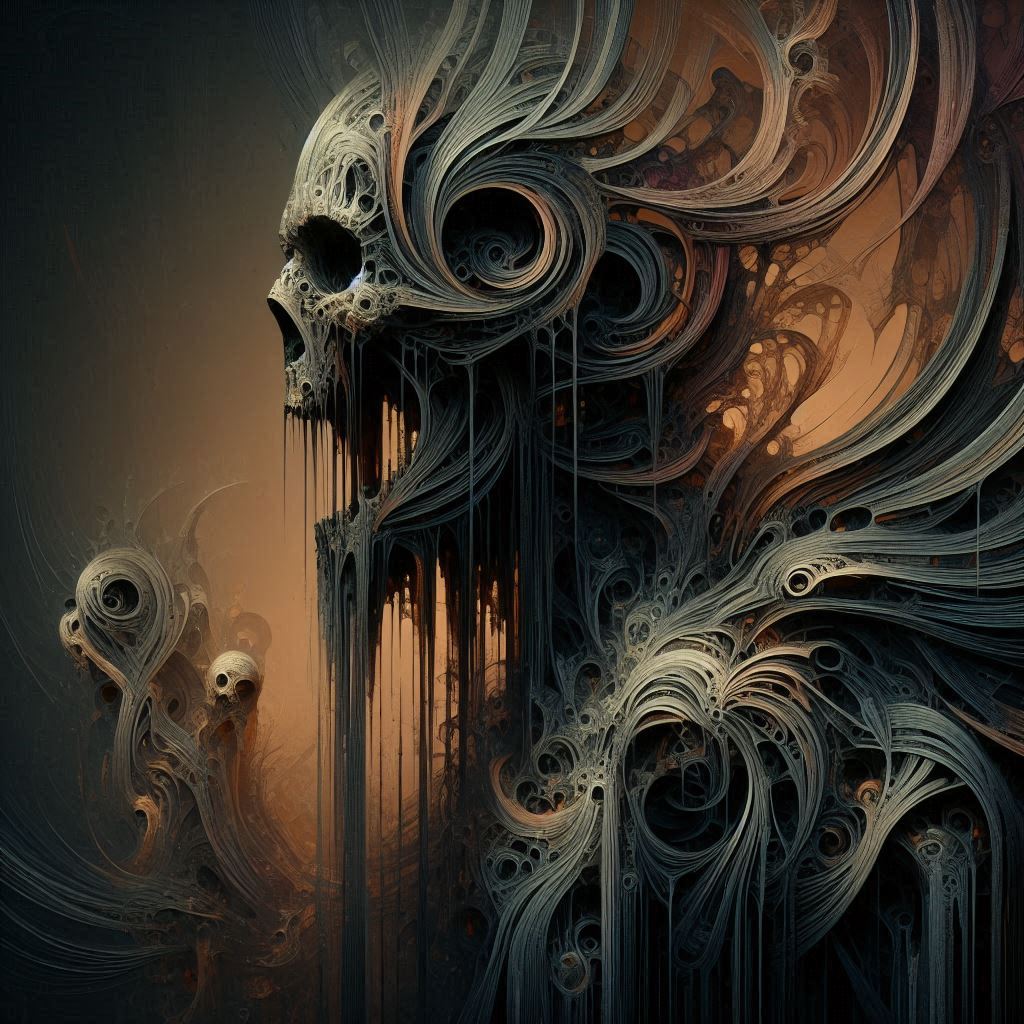
The masks depict a fed-up person, screaming out in severe frustration or shock.
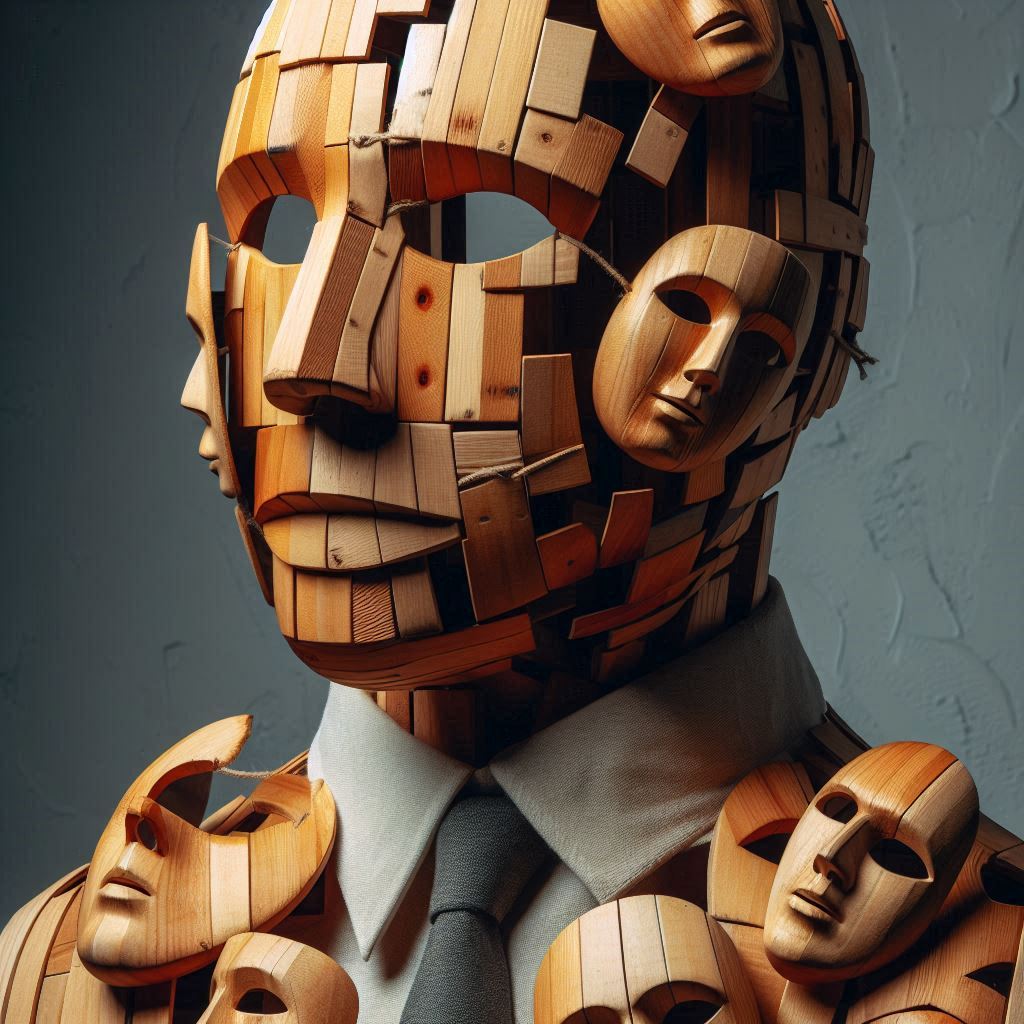
The Clown appears to be a hollow wooden man, wearing masks that have been hacked into pieces and mended in such a way that there is no definitive mask—just fragments, glued together in a wacky arrangement.
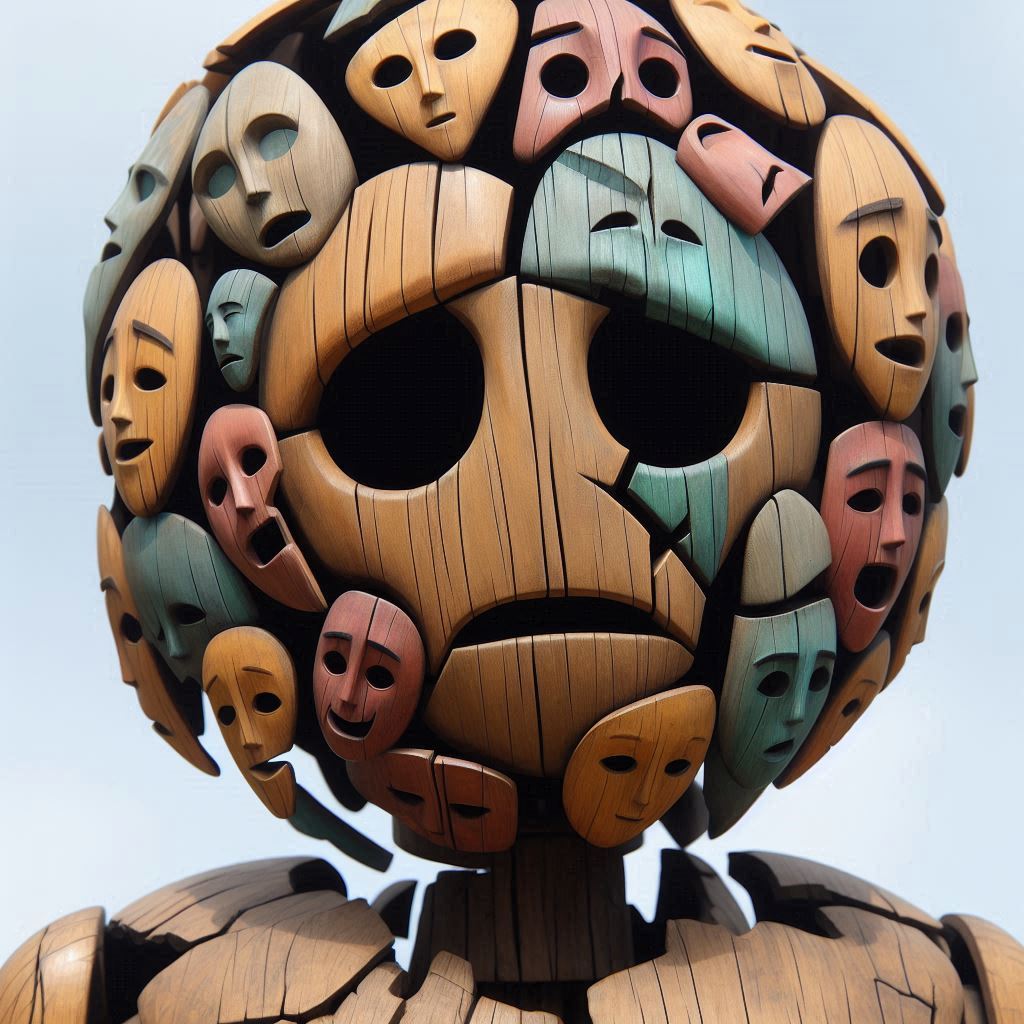
Aptly named Clown, it gives off the sense that the man is, in fact, a parody.
A Deliberate Mess
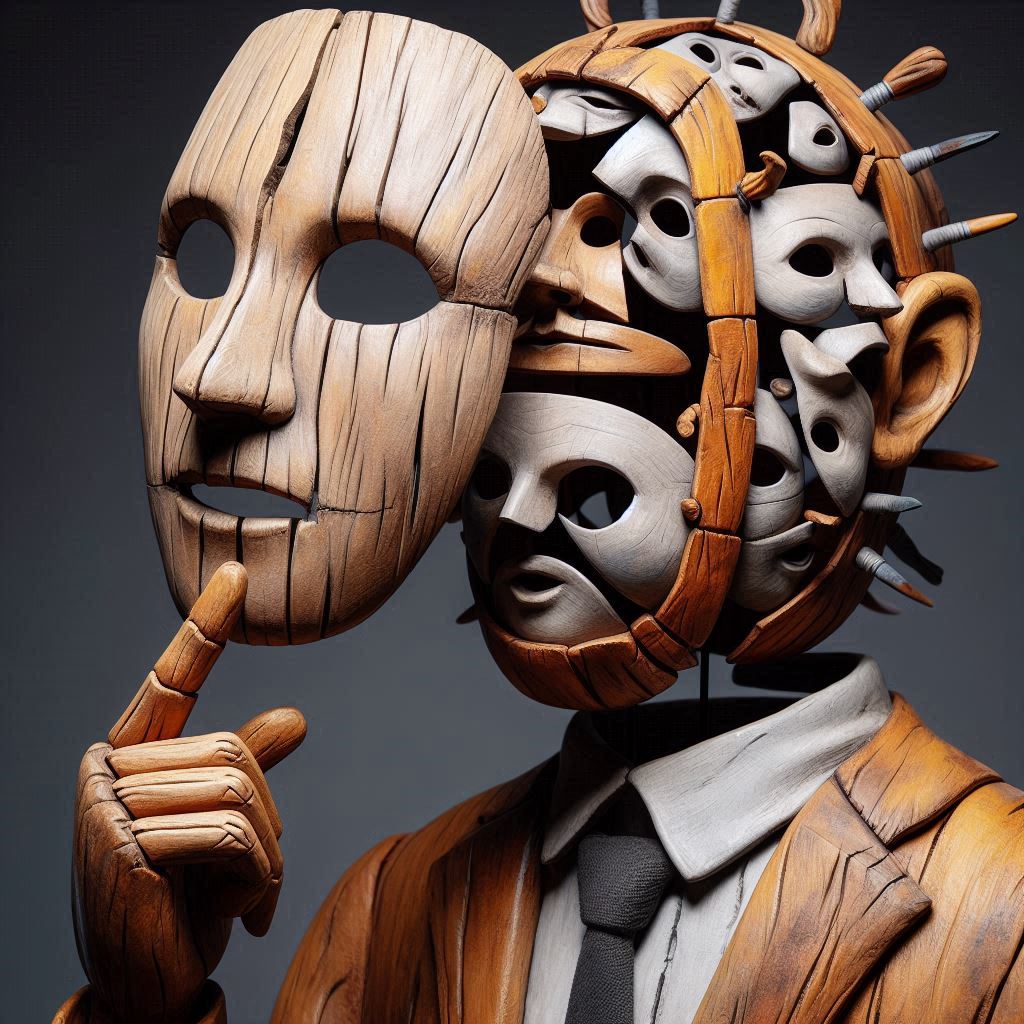
The assumed intent is that one feels disoriented and confused upon viewing the image, scrambling to make sense of the very intentional mess that is the face.
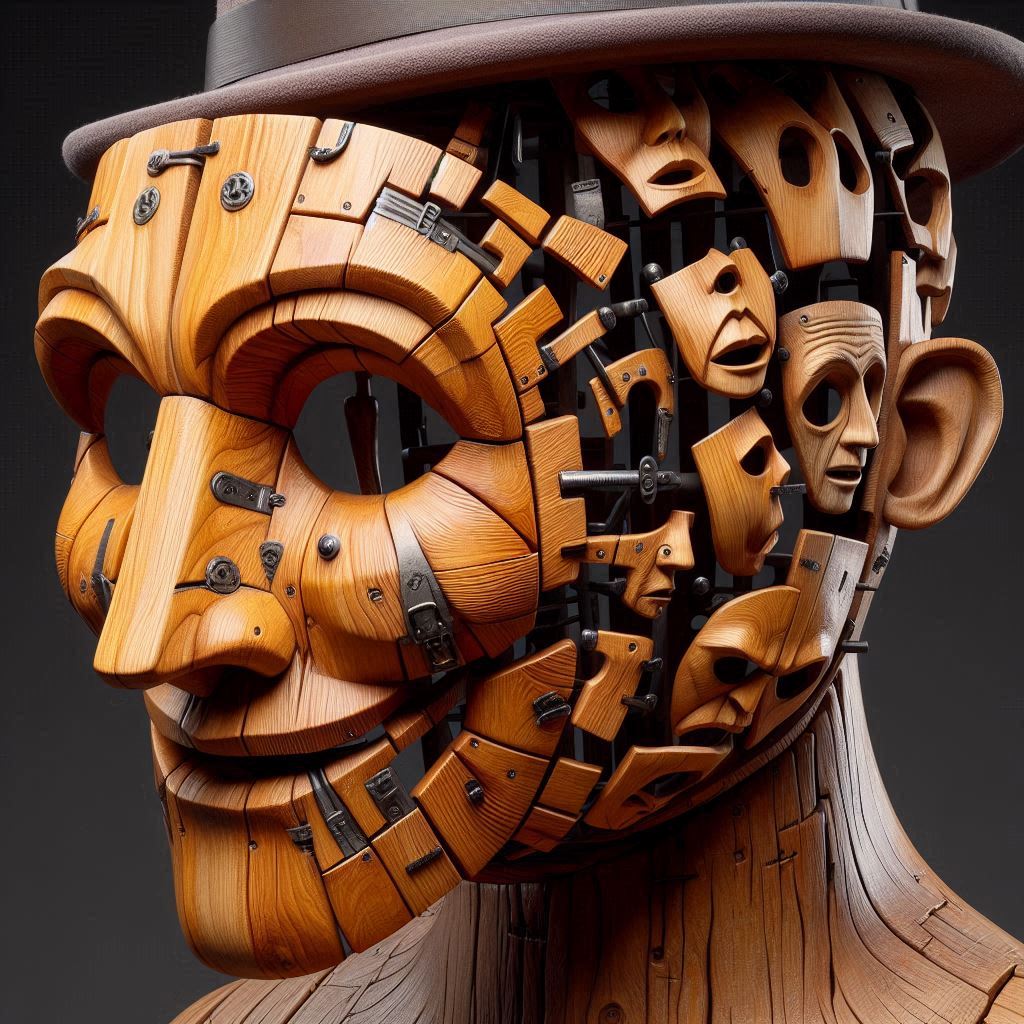
It leaves you, at first, puzzled—staring, attempting to make out the pieces that represent the head.
The dominant and repeated features—hollow eyes and an agape mouth—left me wondering:
What do these symbols mean?
What message is being conveyed here?
Severed from Our Roots
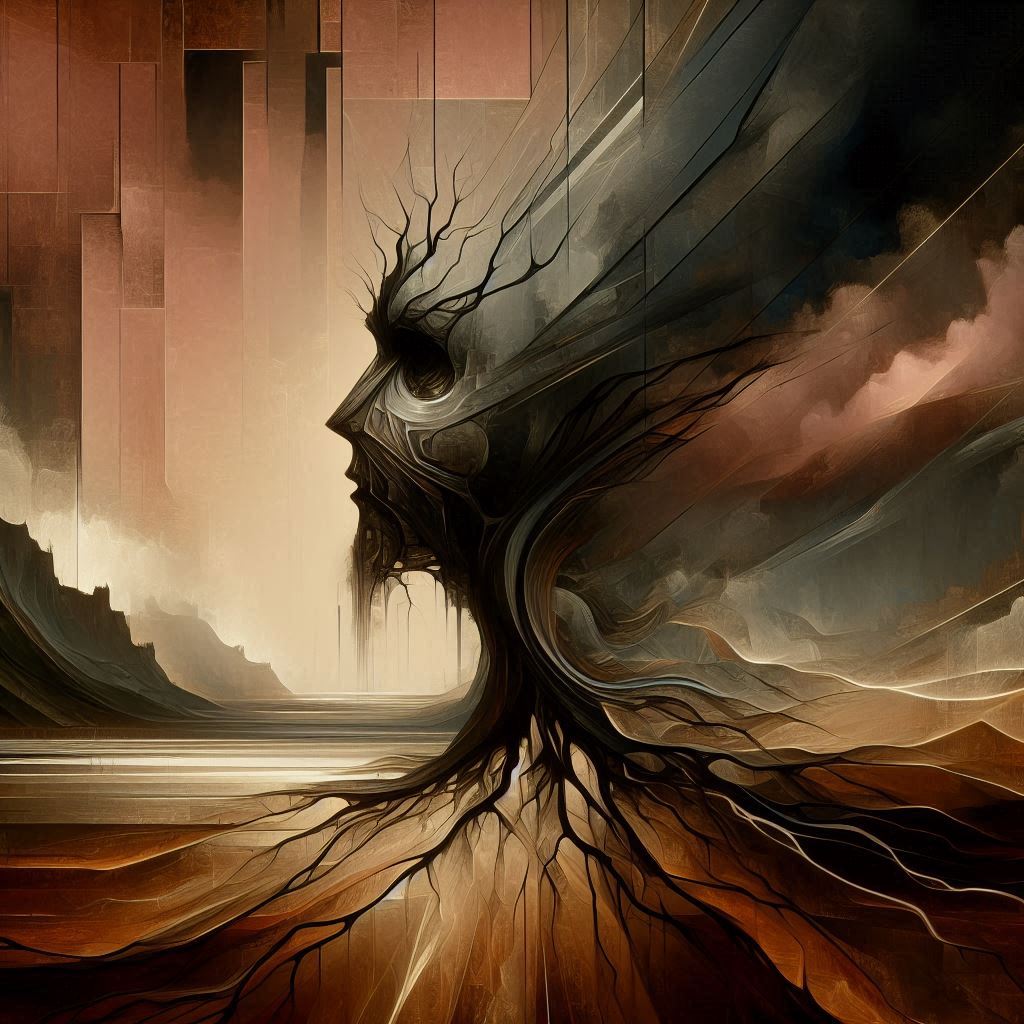
To me, Clown is a representation of how one must trudge through society wearing many masks.
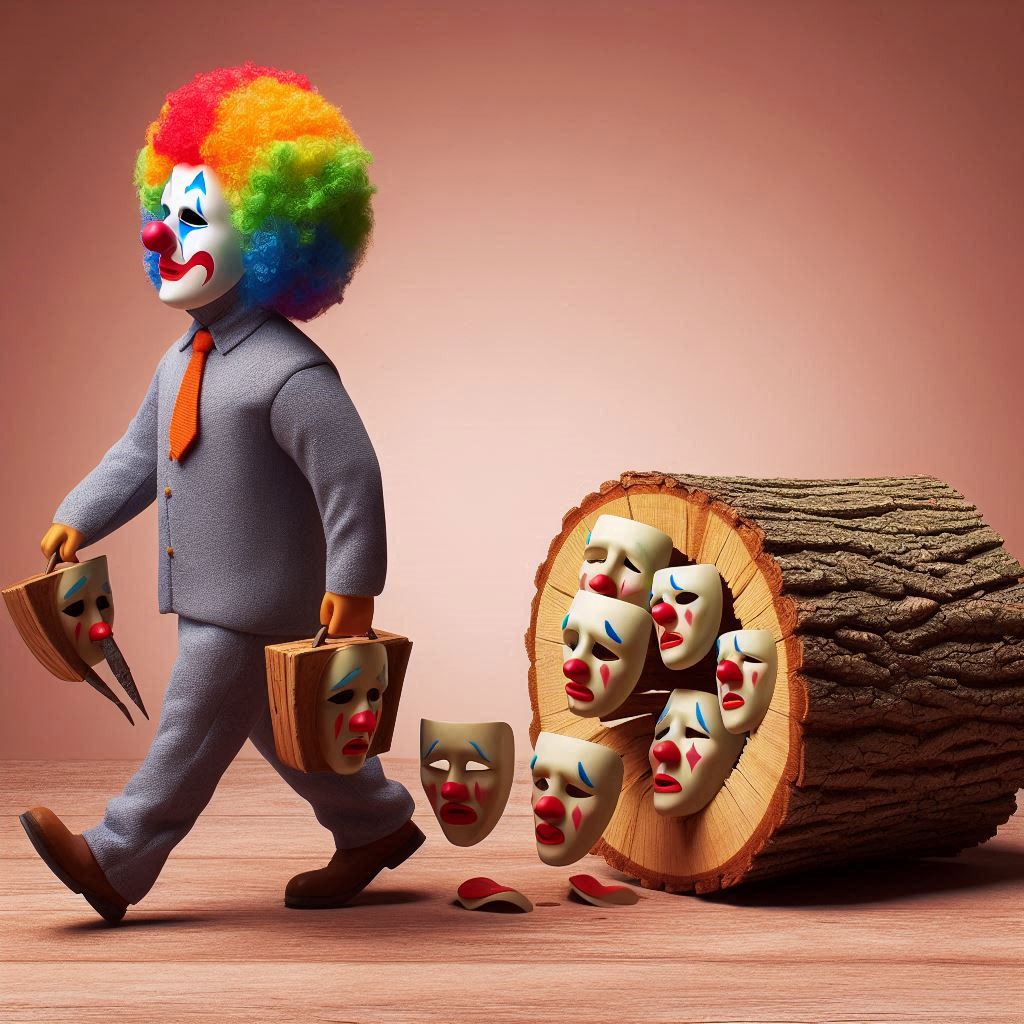
Our bodies (symbolized by the chopped tree trunk) have been cut from our roots.
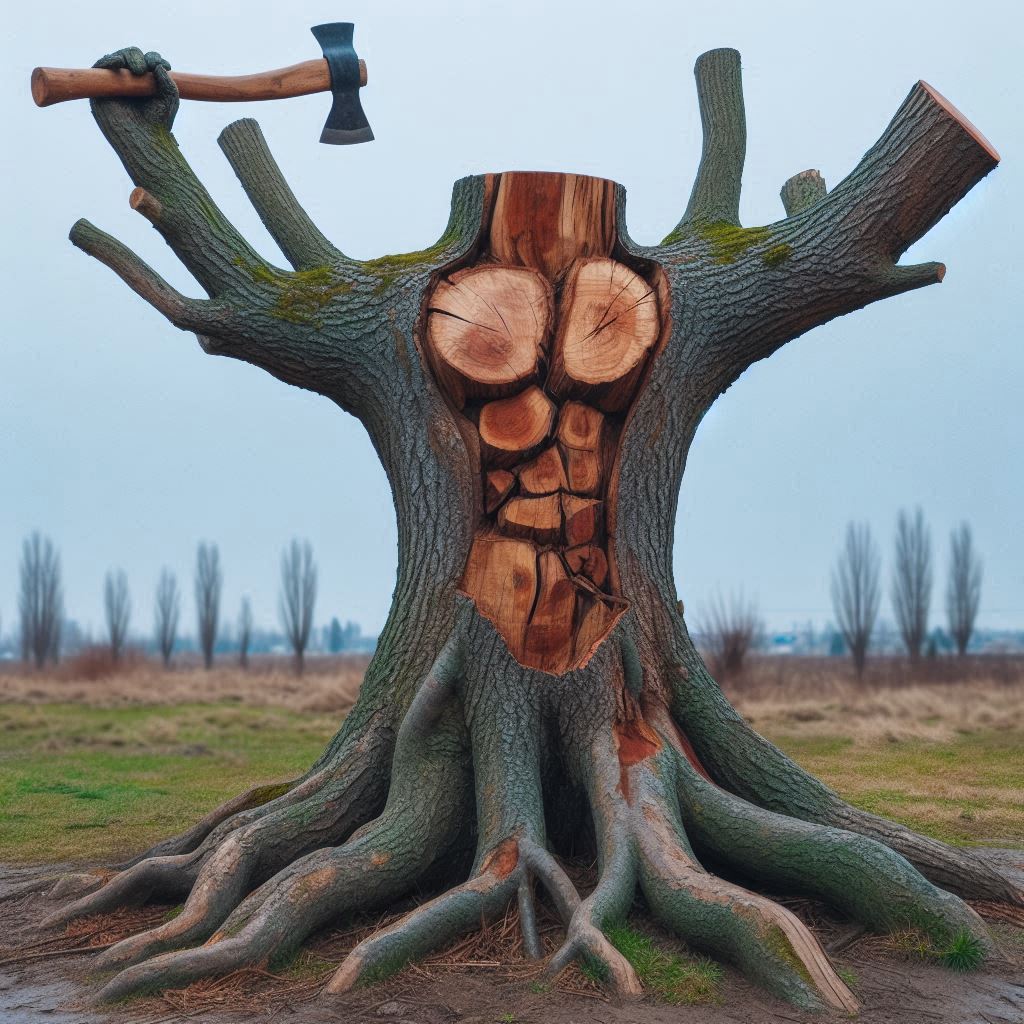
To adapt to this mess, we now live in it—this mess we are forced to endure.
Our roots to the earth grow wearier and weaker—day by day—on weakened, weary legs, that do their best to support the weight we place upon them; a masked facade.
Even the Mask is Fracture
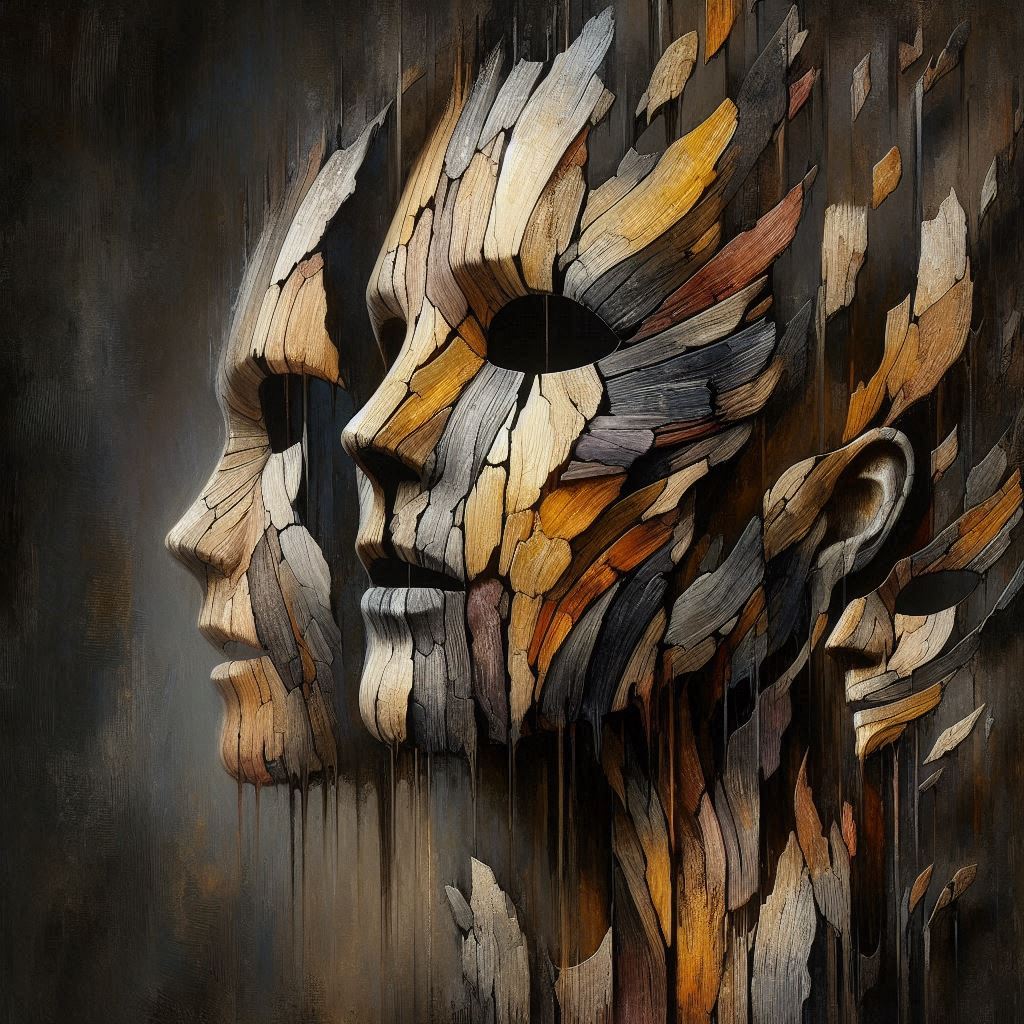
However, Clown dives deeper into the psyche.
Deeper into the notion that even our masked selves (our forced facade) are nothing but puzzled fragments.
Even our masks can’t fathom this mess we’ve created.
Even our masks are screaming out in frustration—only to fall on hollow ears and hollow eyes.
(One can see hollow eyes in this conglomeration of masks, depicting but one mask.)
Only to scream at a hollow society.
A Joke in a Joke of a Society
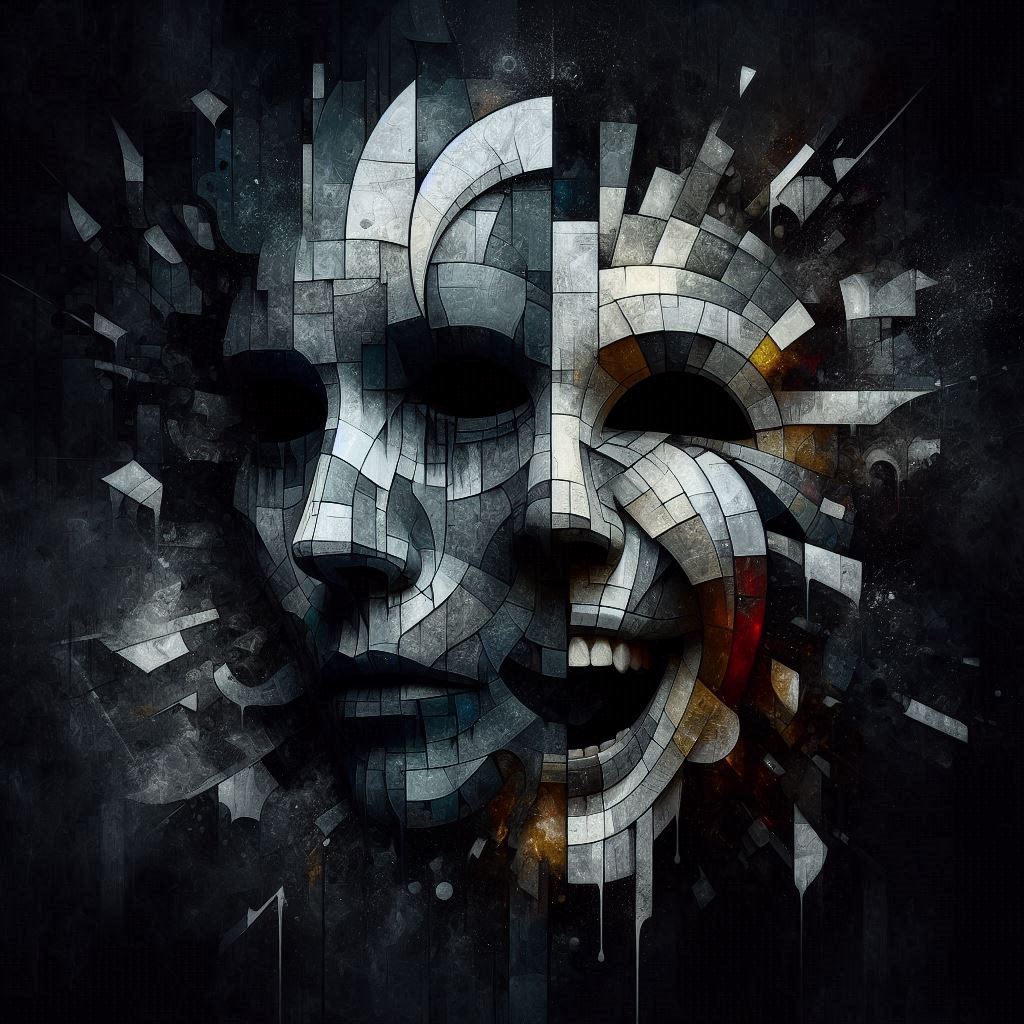
Cementing the idea that we don’t fit in—but when we attempt to, when we try to look and act the part…
We’re still a fragmented, broken mess.
A “joke” in a joke of a society.
A mask within a mask.
We can’t be whole.
We can’t find fulfillment.
We’re hollow—screaming our frustration out… only to have it chopped up and glued back together in a haphazard effort… an afterthought.
Treating the Symptom, Not the Cause
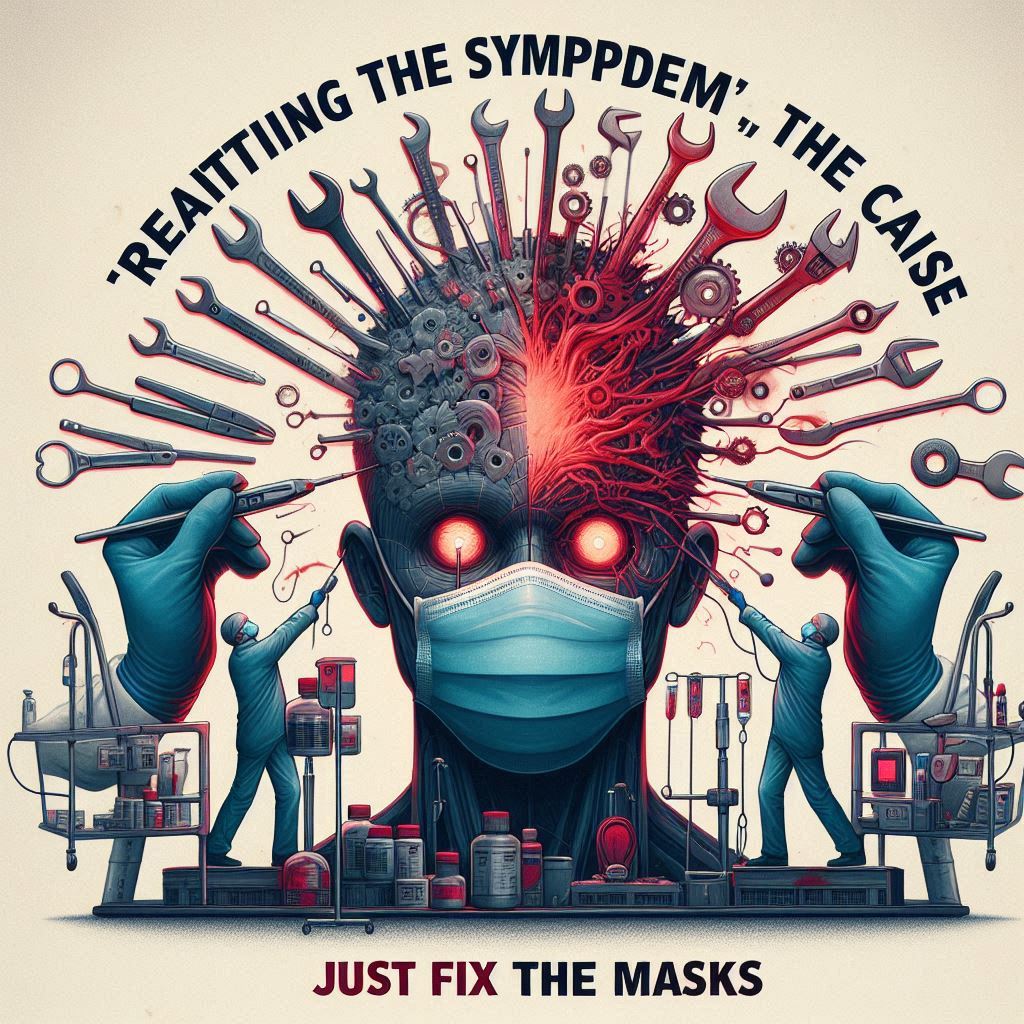
That’s the repair process.
Just fix the masks.
Treat the symptom, not what lies at its core.
Just laugh it off.
Have the doctor throw some pills at the symptom, so we can get right back out there.
Fitting in.
Adapting.
Picking up the pieces.
Sticking ourselves back together again.
The Label of the Clown
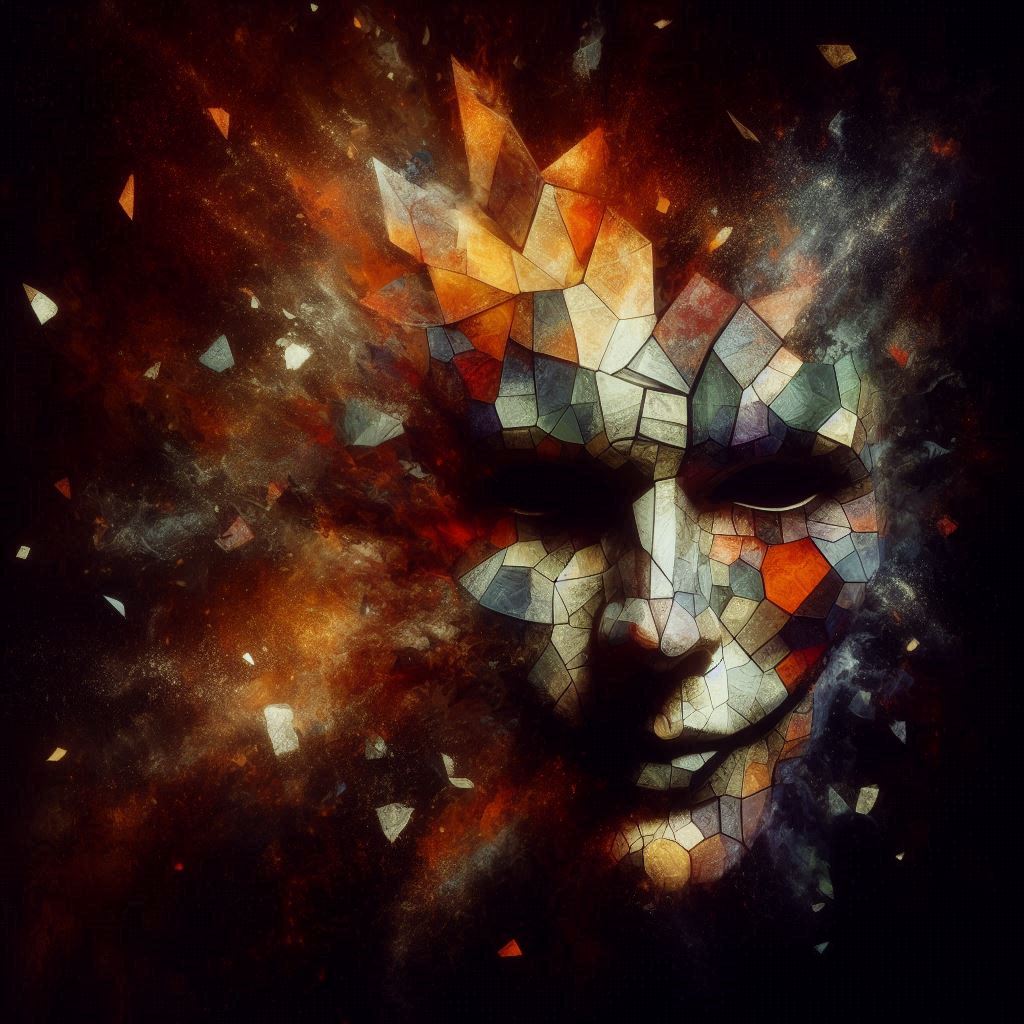
So we do.
We glue the broken parts together.
We tack up our masks.
And what do we do… when the pieces don’t quite fit?
When it doesn’t look the way it’s supposed to?
We label ourselves a “Clown”…
We appear as though we are puzzling others on purpose.
Like we want you to laugh.
Like we want you to see the puzzle within a puzzle, within a puzzle… within…
The Endless Cycle of Meaning
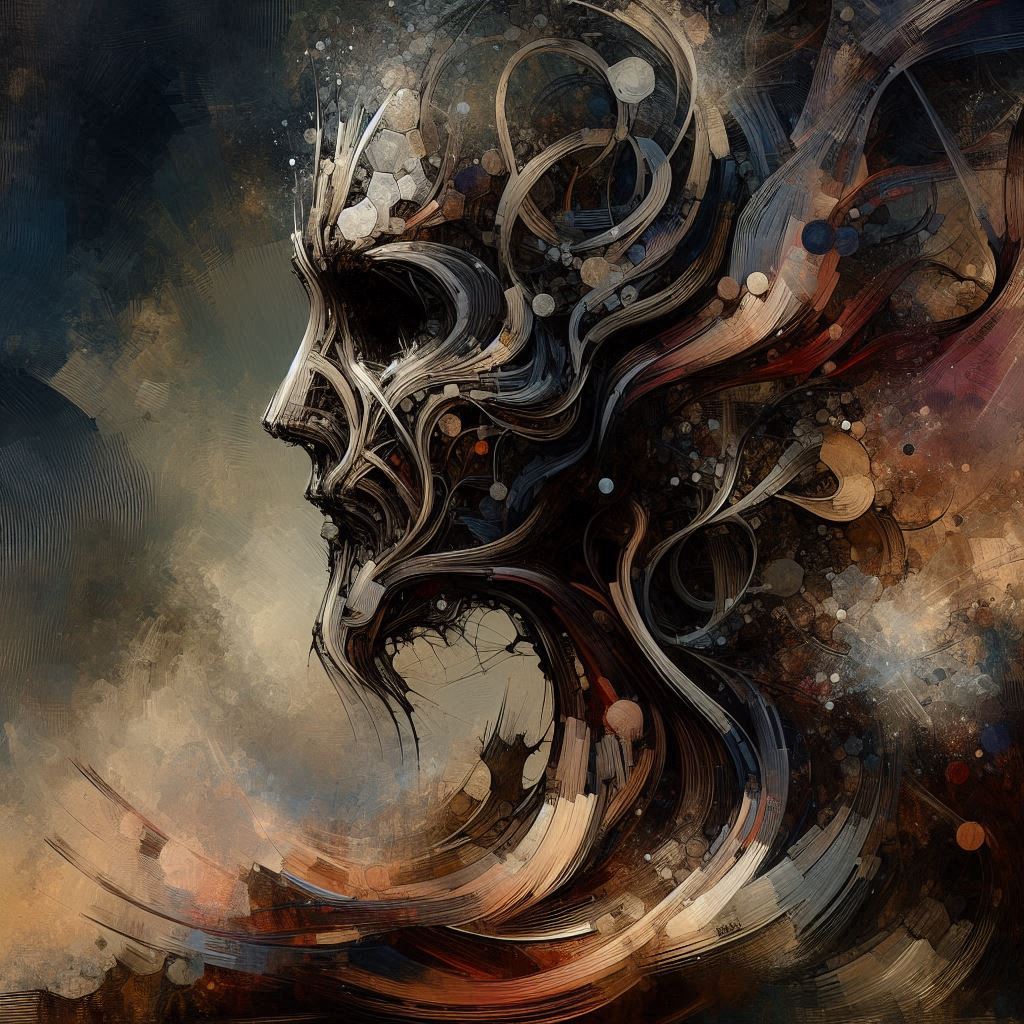
In short, one can gather the signs and symbols within the image and make a comment on what we THINK the artist is trying to depict…
But aren’t we just adding to the problem, then?
Puzzling a puzzle within a puzzle, within a puzzle, within…
A Laughing Stock of Reality
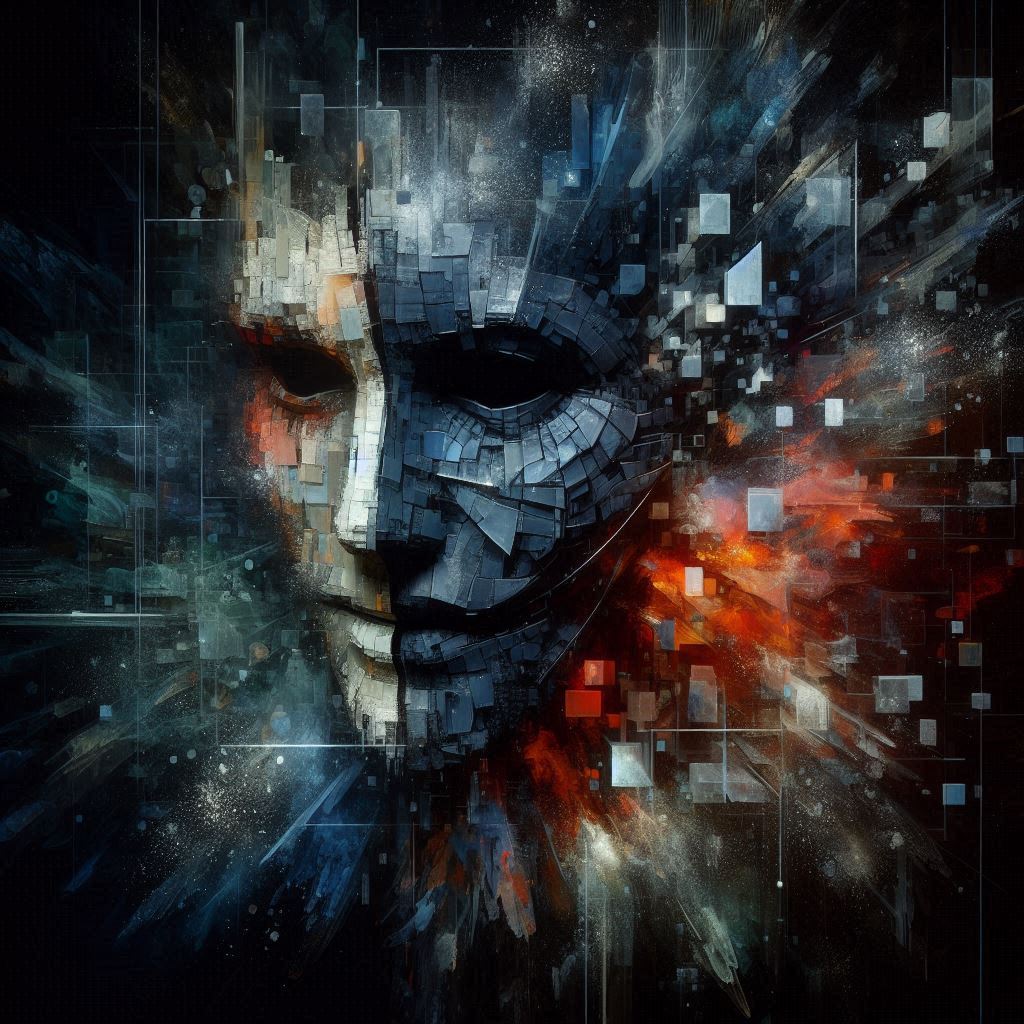
“Clown” mimics mental illness in an artistic way.
To speak to the viewer about how out of place the artist feels.
Even masking to get through the day is driving him mad.
So mad, that the only definitive feature is an agape mouth.
Is it to make you laugh?
Or to make a comment on how society treats those that are different?
As “a laughing stock of reality.”
Tacking on Another Piece…
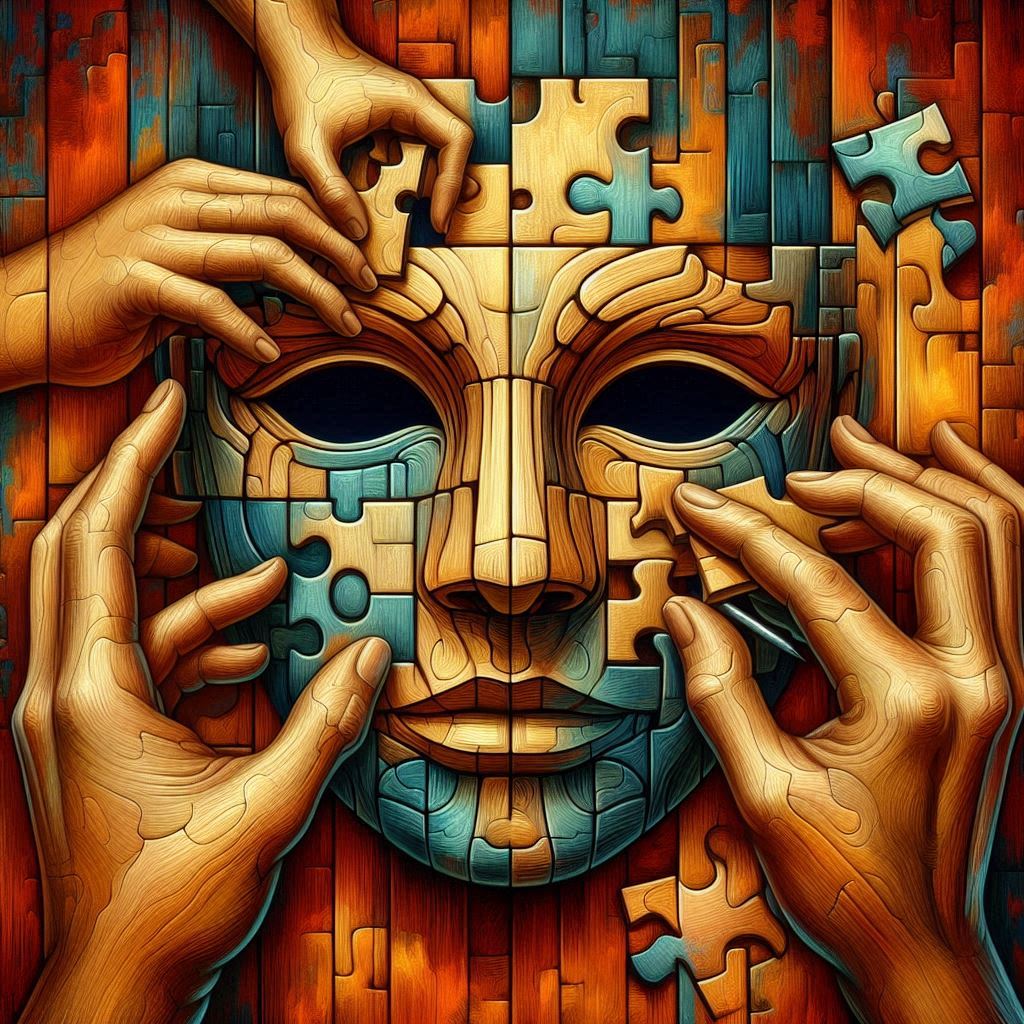
And there, I’ve formed my own puzzle pieces.
Let’s tack them onto this image.
A bit about Tate Adams
The legendary Tate Adams, often hailed as the godfather of Australian printmaking, was a visionary artist whose work pushed the boundaries of traditional art forms.
Born in Northern Ireland in 1922, Adams brought his European influences to Australia in the early 1950s, where he became a transformative figure in the art world.
His passion for printmaking led him to establish the first diploma of printmaking in Australia at RMIT, where he taught for over two decades.
Adams was not only an artist but also a mentor, fostering a new generation of printmakers and elevating the medium to new heights.
In the 1960s, Adams began to explore darker, more introspective themes in his work, reflecting the complexities of the human condition.
It was during this period that he created Clown, a piece that exemplifies his ability to blend technical precision with emotional depth.
The artwork, with its haunting undertones and striking composition, captures the duality of humor and tragedy—a recurring motif in Adams’ oeuvre.
This era marked a turning point in his career, solidifying his reputation as a master of both craft and concept.
Have a closer look at Clown by Tate Adams via the Art Gallery of NSW.
Or, Explore his contributions to printmaking in Australia through this ZSR Library article.
More about the artist behind Clown:
LATER to come…
An artist tells you what they think another artist thinks art is… in “Maurya” by Tate Adams.